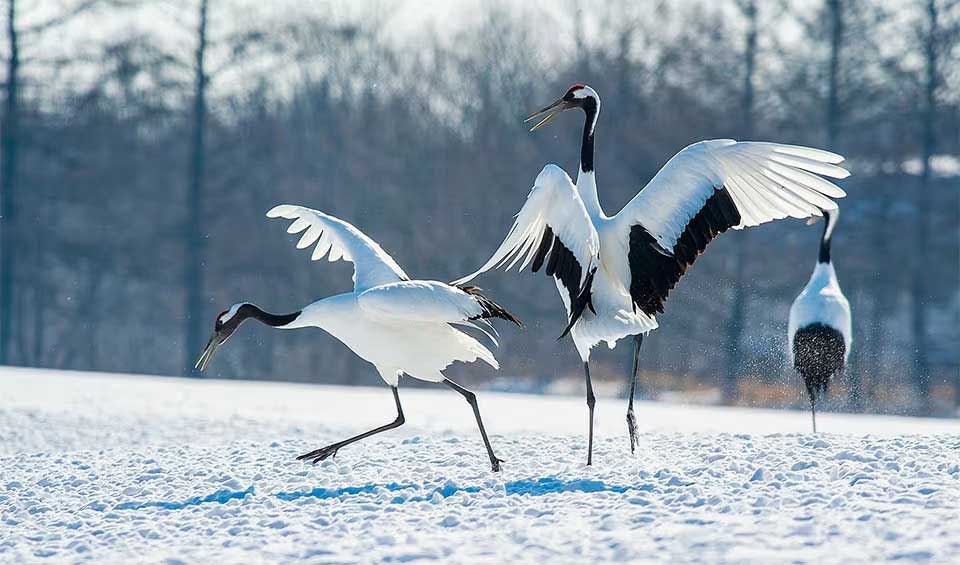Known for its striking appearance and significant cultural importance in East Asia, it is one of the rarest and most revered birds in the world. This crane species is celebrated for its beauty and majestic stature, symbolizing luck, longevity, and fidelity.
Red-crowned cranes are among the largest crane species, standing up to five feet tall and reaching a wingspan of over seven feet. Their name derives from the patch of bright red bare skin atop their heads, which contrasts vividly with their predominantly white body and black neck. The elegance of their long, flowing feathers, particularly during mating dances, adds to their ethereal quality. They are primarily found in large wetlands in East Asia, particularly in areas like Hokkaido, Japan, and parts of China and Korea. During winter, they migrate to lower altitudes, often seen in river valleys and paddy fields. They are omnivorous, feeding on a variety of plants, insects, fish, and small mammals.
Red-crowned cranes are known for their elaborate and graceful courtship dances, which include synchronized bowing, jumping, and wing-flapping, accompanied by a complex series of calls. This dance not only strengthens pair bonds but also reaffirms their territory. With only a few thousand individuals left in the wild, the importance of conservation efforts cannot be overstated. Programs that involve habitat restoration, captive breeding, and public education are actively being pursued, and your contribution can make a significant difference in stabilizing and increasing their populations.
Distribution
 China
China Japan
Japan Korea
Korea Mongolia
Mongolia North Korea
North Korea Russia
Russia Taiwan
TaiwanAnything we've missed?
Help us improve this page by suggesting edits. Glory never dies!
Suggest an editGet to know me
Terrestrial / Aquatic
Altricial / Precocial
Polygamous / Monogamous
Dimorphic (size) / Monomorphic
Active: Diurnal / Nocturnal
Social behavior: Solitary / Pack / Herd / Flock
Diet: Carnivore / Herbivore / Omnivore / Piscivorous / Insectivore
Migratory: Yes / No
Domesticated: Yes / No
Dangerous: Yes / No




